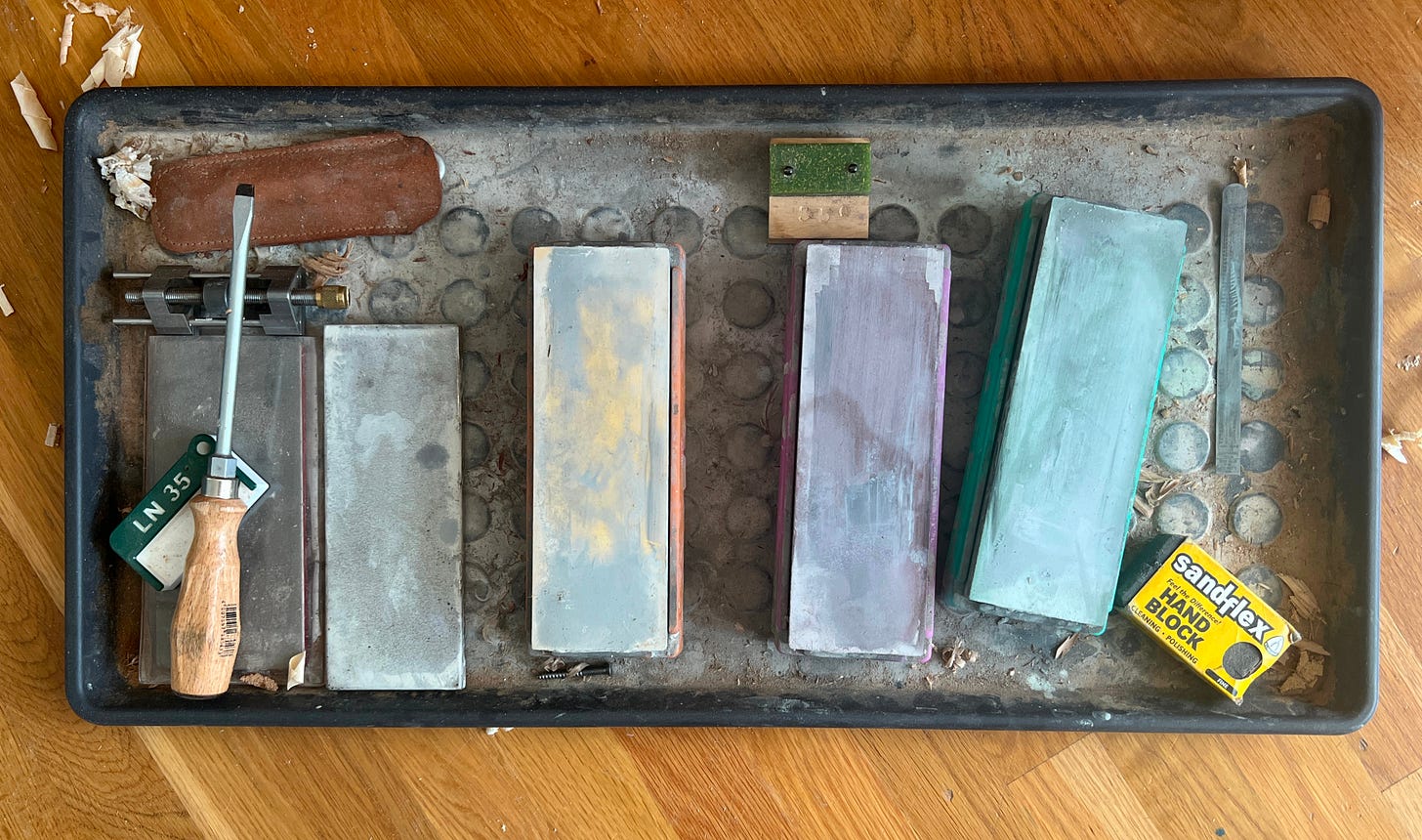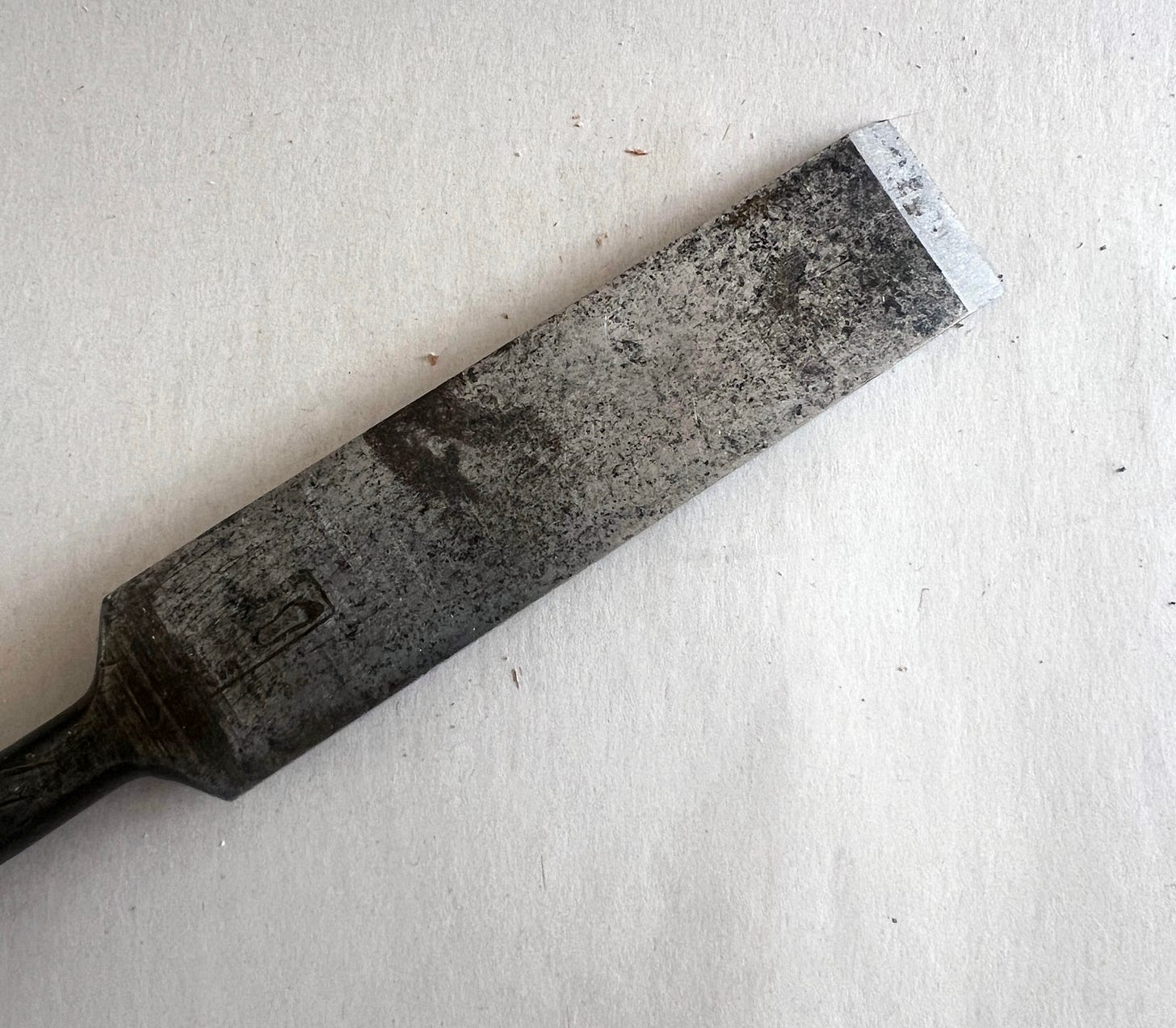
The best way to keep tools rust-free is to use them regularly, then wipe them down after every use with an oil-soaked rag (what we call a woobie)1.
But let’s face it: Some tools don’t get used enough to keep them rust free – and if summers around you are like the hot, humid Ohio River Valley in which we live, you know that sometimes rust happens, no matter how much you work to keep it at bay. Or say you haunt flea markets in search of the perfect 19th-century Buck Brothers or Witherby chisel – you know you’re in for a cleaning job once you find it. And sometimes, tools just get a little dirty and a rag won’t wipe off the offending spot.
Enter Sandflex blocks made by Klingspor Abrasives: semi-flexible rubber blocks impregnated throughout with grit, in coarse, medium and fine. These are basically magic erasers for rust, and a set of three (coarse, medium and fine) costs less than $20.
I usually reach first for the fine, because it is rare that one of my tools has a thick enough spot of rust or discoloration that I need the medium or coarse blocks with which to attack it. (Except today in my chisel picture…when I would have liked to try the medium grit, but couldn’t find it.)

I start with the fine because it leaves tiny (read, pretty much invisible) scratches on the tool’s surface. So small that they don’t offend me (well, they do, but less than a spot of rust). But if the fine is not working fast enough (that is, the offending spot is not starting to lift after six or so rubs) I reach for the medium then follow with the fine. And if I have to use the coarse, I follow with the medium then the fine. It’s like using sandpaper; working your way through the grits is faster than skipping one.
After you’re done, wipe the tool with your woobie.
Unless you restore tools for a hobby or living, the Sandflex blocks last for decades. In fact, the heavy cardboard wrapper will wear out before the block ever does. Our only caution with these blocks is that they will remove patina as well as rust. So if you attempt to remove a rust spot on the sidewall of a plane, be aware that your efforts will take things down to bare metal. And then you’ll want to abrade the entire sidewall. And then the other sidewall.
I keep the fine block in my tool tray.2 Apparently, I should start keeping the medium and coarse in there, too – at least I’d know where to find them for the rare times I need them.
Any oil. Jojoba. Camellia. WD-40. 3-in-One machine oil. Oil from the side of your nose. All five. Doesn’t matter.
My stones, in case anyone is interested, are Shapton Pros (#1,000, #5,000 and #8,000). The flattening plate is a DMT Dia-Flat






They really and almost magical for how effective they are. I think I've had my original set for at least 8-10 years and I do a lot of tool restoration (though I do also use a non-woven abrasive "deburring wheel" on a bench grinder for big jobs).
I will say to be mindful of the grit that is shed from the block during use. It can make for an abrasive mess on the bench before you realize, so use it in a contained area. I also usually brush the tool off before oiling it to minimize transferring any grit to the rag.
They really are magic erasers for metal.